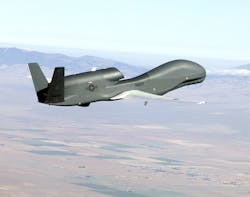ALAMEDA, Calif., 3 Feb. 2015.Wind River, a provider of software for intelligent connected systems, has released updates to its VxWorks 653 operating platform, including support for multi-core silicon and robust partitioning for applications that enable multilevel RTCA DO-178C certification. Wind River also announced support for the Safety Base Profile of Future Airborne Capability Environment (FACE) 2.1 Technical Standard.
This version of VxWorks 653 will also enable customers to integrate multiple software applications at different levels of safety from multiple application software suppliers on a shared compute platform. The robust safety partitioning and virtualization/separation capabilities of VxWorks 653–certified and validated in mission-critical avionics systems–also make it an optimal choice for critical industrial and transportation solutions, officials say.
Wind River also has released Wind River VxWorks 653 2.5 Platform, which supports both the ARINC 653 standard and the Safety Base Profile of the FACE Technical Standard 2.1 from the FACE Consortium. The FACE Technical Standard provides guidelines for creating a common operating environment for applications across multiple Department of Defense (DOD) avionics systems. VxWorks 653 Platform supports numerous open standards and allows customers to choose from a variety of APIs when developing their safety-critical airborne applications.
"With the two latest versions of VxWorks 653, not only are we enabling a shift toward adoption of multi-core silicon in the safety-critical market, but also strengthening our commitment to open standards and portability with support of the FACE Technical Standard," says Dinyar Dastoor, vice president of product management at Wind River. "These platform updates are allowing customers to utilize cutting-edge multi-core hardware and open standards to increase profitability, reduce risks, and address regulatory requirements."
Part of the Wind River product portfolio of safe and secure operating systems, VxWorks 653 is a commercial off-the-shelf (COTS) platform for delivering safety-critical, integrated modular avionics (IMA) applications.
Used in more than 325 programs by more than 185 customers in over 70 aircraft, VxWorks 653 is the platform of choice for a wide range of commercial, military, and space safety- and mission-critical programs, both manned and unmanned, around the globe. These include: Airbus and Boeing military and commercial aircraft like the Airbus A400M and Boeing 787.
More information about Wind River VxWorks 653 Platform is available online at http://tinyurl.com/VxWorks653.
Wind River, a wholly owned subsidiary of Intel Corp. (NASDAQ:INTC), delivers software for intelligent connected systems.


